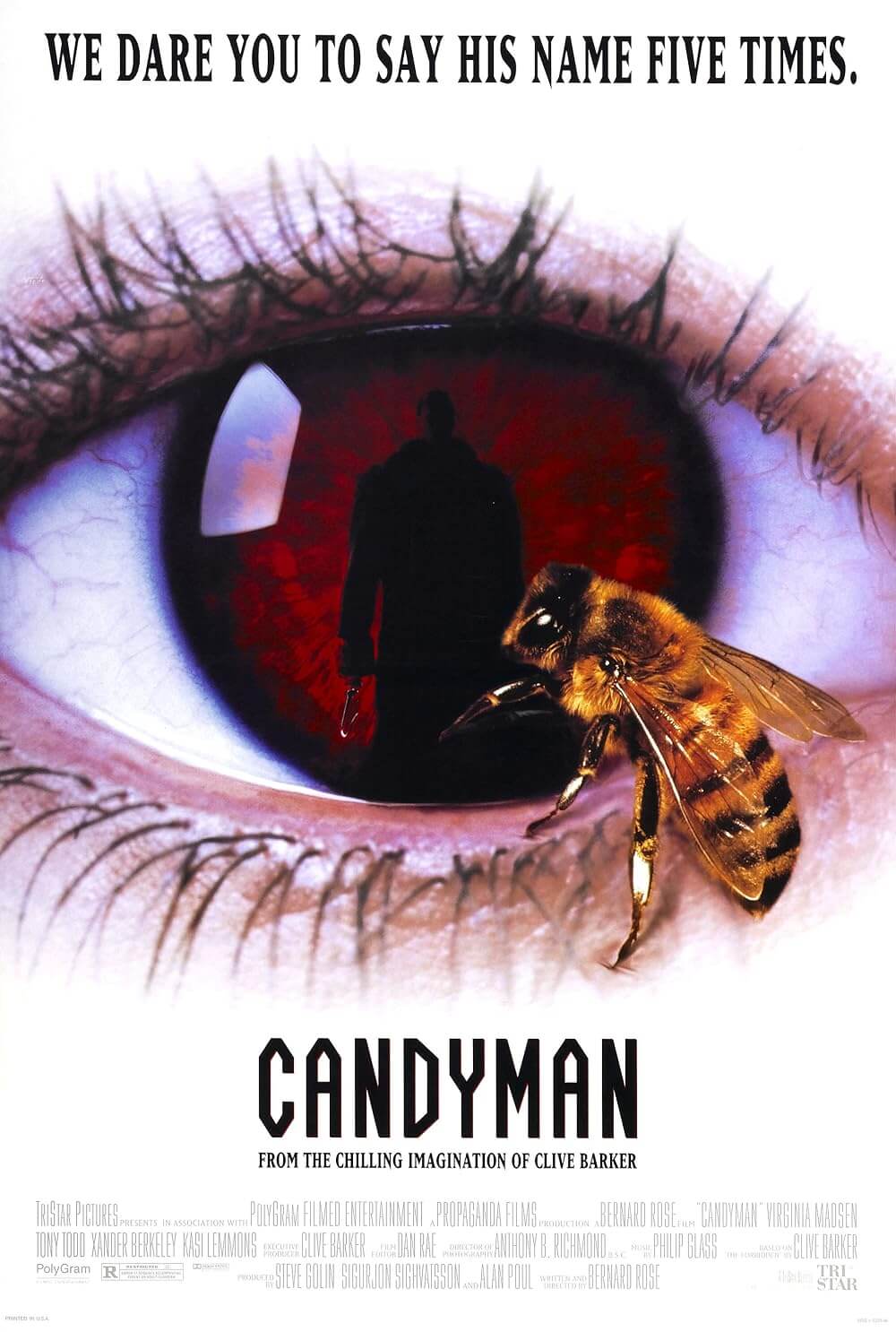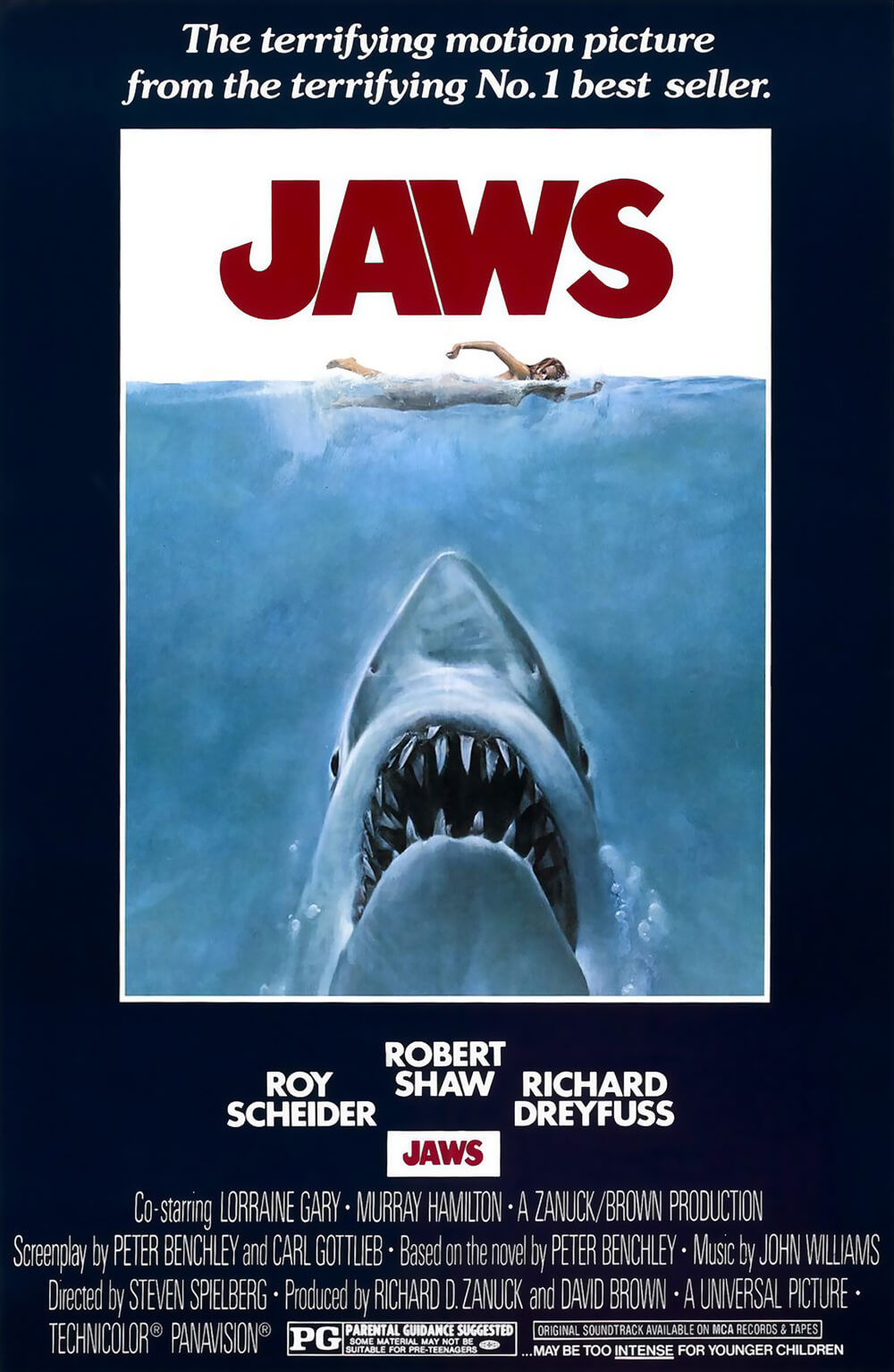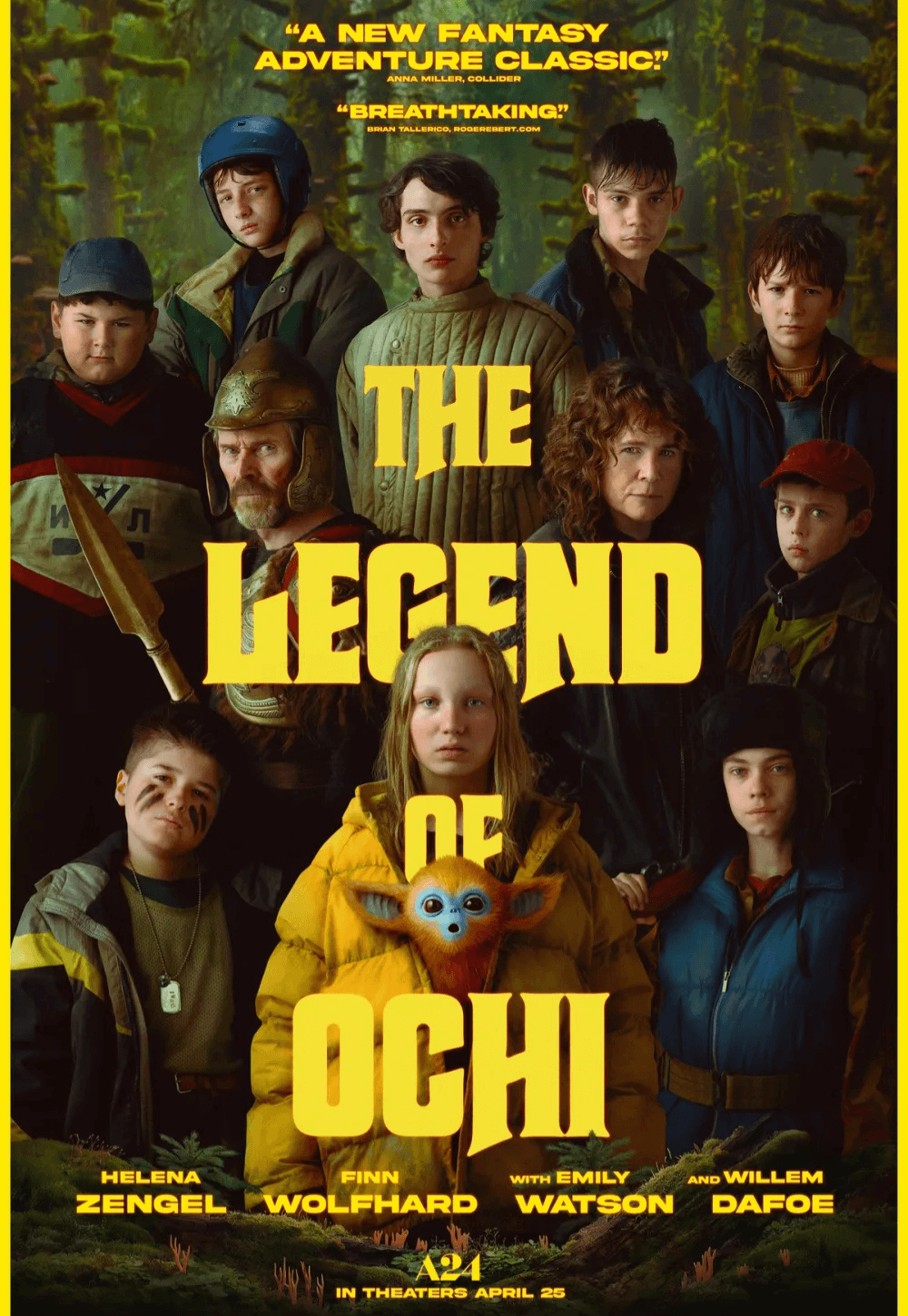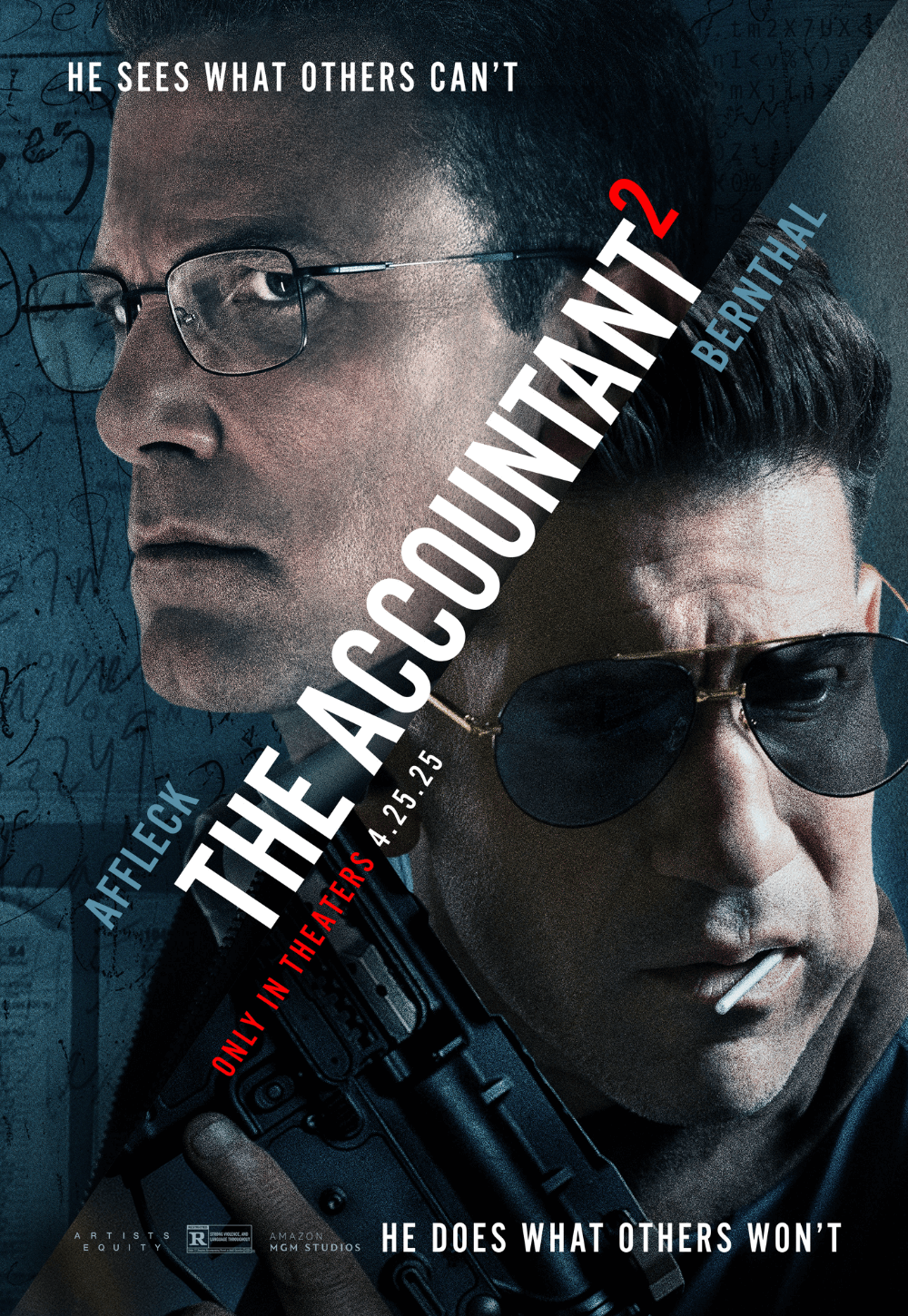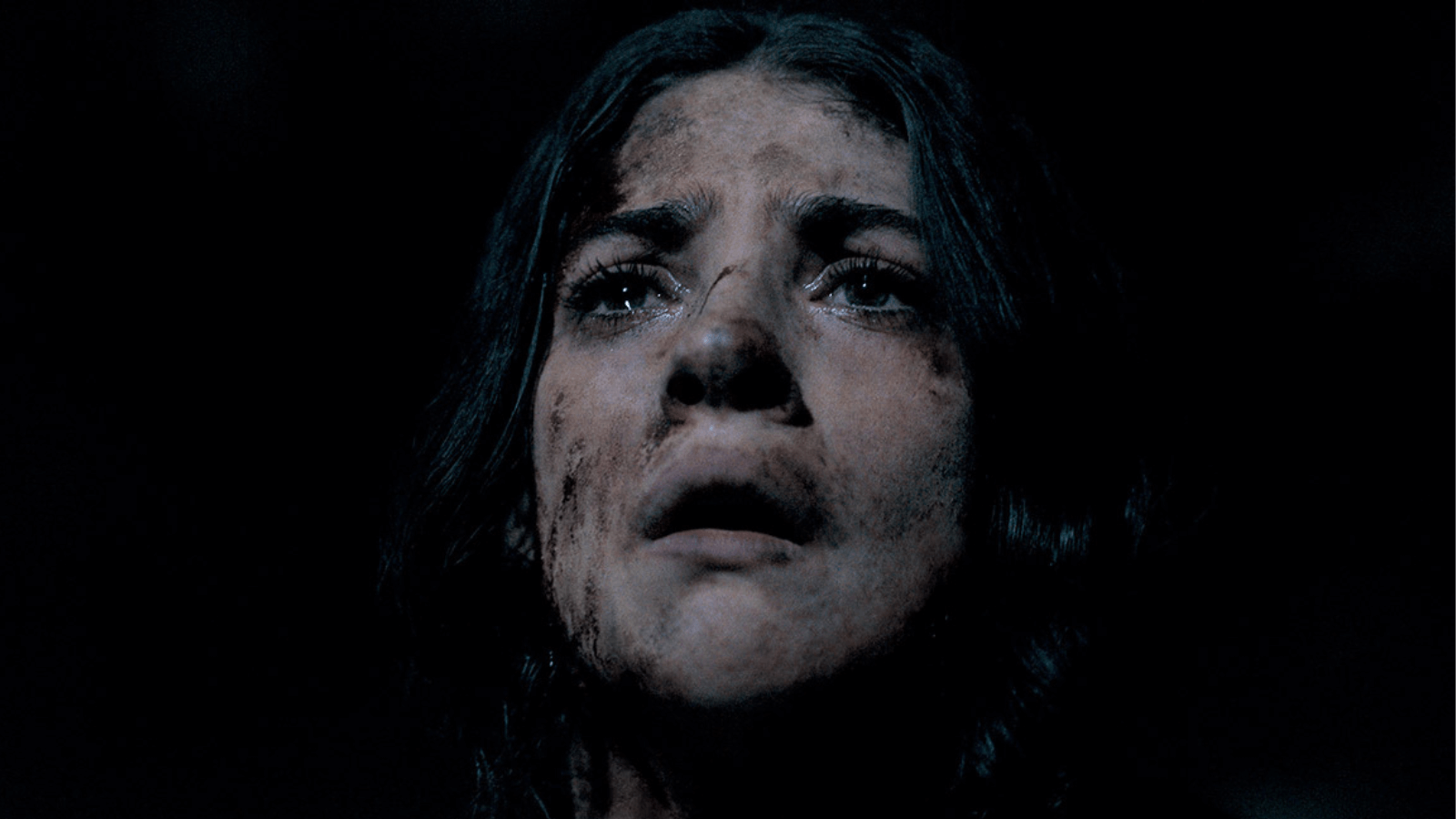
Until Dawn
By Brian Eggert |
When there’s Max’s series The Last of Us, which goes to great lengths to honor its game origins and expand its mythology in dramatically and thrillingly satisfying ways, cherished by fans and newcomers alike, who needs based-on-a-video-game fare like Until Dawn? The new feature adapts the 2015 game, which was released by PlayStation, co-written by horror legend Larry Fessenden, and starred some notable talent (Rami Malek, Hayden Panettiere, Brett Dalton, Peter Stormare, and Fessenden, among others). The game’s format relies on a choose-your-own-adventure gimmick, where every decision the player makes has repercussions, taking them down a unique story branch. The game has incredible replay value with hundreds of possible outcomes. But the filmmakers have resolved to turn this game mechanic into a storytelling device, playing into a subgenre not associated with the original material, making for an underwhelming adaptation of the game.
Doubtless, director David F. Sandberg and writers Blair Butler and Gary Dauberman pitched the concept as “Happy Death Day meets The Cabin in the Woods,” and an executive at Sony’s genre offshoot Screen Gems couldn’t resist the bankable mashup. The idea combines a hodgepodge of various ghouls, witches, and masked maniacs within a live-die-repeat scenario, resulting in a familiar amalgamation of proven formulas. While the setup has promise, the writing is underwhelming, leaving nearly every aspect of the screen story unfulfilling—especially the characters. Here’s a group of people played by good-looking performers who contribute little pleasure to the proceedings. Although I’m sure they’re all talented in their own ways, the script gives them thin personalities, so describing them becomes a matter of zeroing in on their one distinguishing trait.
For instance, there’s Clover (Ella Rubin), who has been depressed since her sister Melanie (Maia Mitchell) went missing a year ago, not long after their mother’s death. Along with four friends—her ex Max (Michael Cimino), occasionally psychic friend Megan (Ji-young Yoo), best friend Nina (Odessa A’zion), and Nina’s new boyfriend Abel (Belmont Cameli)—Clover retraces Melanie’s steps before she disappeared. They find evidence that suggests she stopped at an abandoned visitors’ center that looks like a bed-and-breakfast in Glore Valley, so they resolve to investigate on a rainy spring day. Already, players of the game will wonder why the setting has changed from the memorably claustrophobic, snowy mountain lodge in the game to a nondescript house in the movie. The answer probably has something to do with budgetary limitations, but it’s the first sign that the filmmakers aren’t interested in a faithful adaptation.
While the group investigates their surroundings, they notice strange details: a wall of rain that surrounds the visitors’ center grounds, a corkboard with picture-only “Missing” posters, a ledger with the same names written over and over, and a creepy skull hourglass. When a clown-masked killer shows up and slays them all in brutally violent ways, and they instantly respawn to a precise point earlier in the evening, they realize they’re caught in some manner of temporal loop controlled by the hourglass. Does this have something to do with the whole town sinking into the ground after a mine collapsed? Probably. Is the appearance of an unnerving mad scientist (Stormare) related to their situation? Almost certainly. Does the movie ever explain in any satisfying way what’s happening and why? Absolutely not. But a decrepit old woman shares a critical piece of information: “Only one way out—you either survive the night or become part of it.”
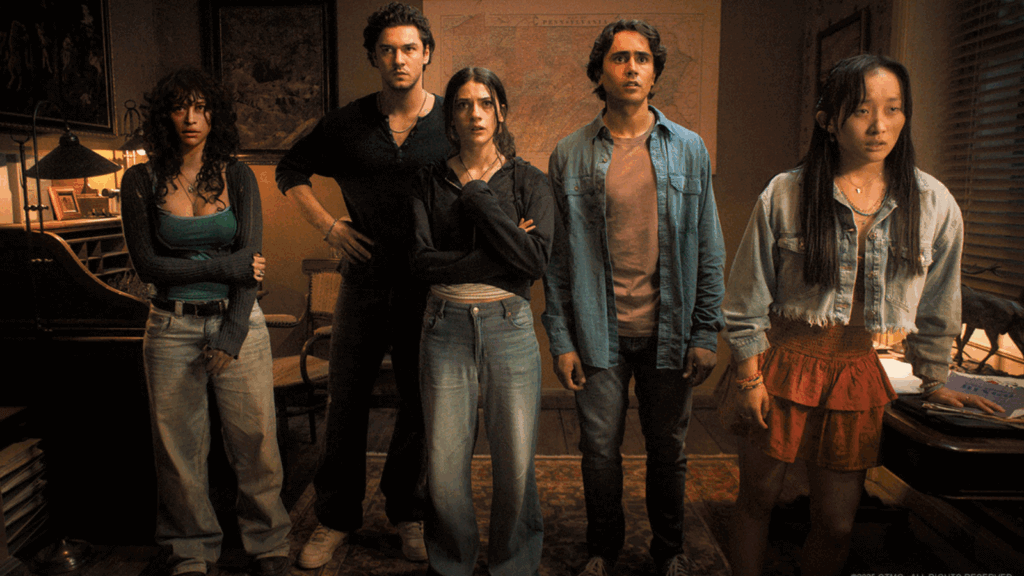
Until Dawn is a woefully underwritten movie, with characters who seem self-aware, even horror-savvy, except they keep making one stupid decision after another. Always with inadequate illumination, they investigate dark basements, pass through doors marked “Do Not Enter,” and explore old, abandoned mine shafts (this, despite the local history of mines collapsing). They face various threats: murderous maniacs, warped subterranean monsters, and an unexplained giant. And they learn the hard way not to drink the water. Their deaths are gory and violent, with a satisfying application of practical effects. Each time they die, they gradually degrade in appearance, meaning they don’t have endless lives (to use video game parlance). Alas, instead of mercifully sparing the audience by reducing the number of anonymous twentysomethings as the movie goes, we’re stuck with these forgettable characters for the duration.
Sandberg, who got his start with Lights Out (2016) and Annabelle: Creation (2017), returns to horror after taking a detour into superhero territory with the fun Shazam! (2019) and its abortive sequel, Shazam! Fury of the Gods (2023). He’s a competent director but often saddled with subpar scripts. Here, Butler and Dauberman, both experienced writers in the genre—although I can’t say I’ve enjoyed their work in the past—try a little bit of everything. Instead of just picking one of the game’s branches to tell an engaging story, they attempt to capture all the branches and the various creatures, killers, and elaborate deaths therein. They deploy not only a time-loop narrative but multiple horror subgenres within that setup, from slasher to found footage to body horror. The result is an unsatisfying horror smorgasbord.
At one point, Megan remarks, “What’s more terrifying than not knowing what comes next?” But when the threat could be anything, and there’s every chance of respawning, the danger hardly feels immediate. The filmmakers’ choice to turn the gameplay variety of Until Dawn into a story structure not only proves conceptually misguided, but the execution also failed to grab me. The material feels like it’s trying to do too much, and a less-is-more approach might have been preferable. Moreover, the screenplay’s half-hearted theme about Clover not running away but confronting her problems never lands, leaving the story emotionally hollow. And the writers’ cursory explanation of what’s going on and why Clover is the “engine” of this place goes beyond lackluster and into the realm of nonsense. Until Dawn is all the more disappointing because a movie based on this game had potential, and the filmmakers squandered it.

Consider Supporting Deep Focus Review
I hope you’re enjoying the independent film criticism on Deep Focus Review. Whether you’re a regular reader or just occasionally stop by, please consider supporting Deep Focus Review on Patreon or making a donation. Since 2007, my critical analysis and in-depth reviews have been free from outside influence. Becoming a Patron gives you access to exclusive reviews and essays before anyone else, and you’ll also be a member of a vibrant community of movie lovers. Plus, your contributions help me maintain the site, access research materials, and ensure Deep Focus Review keeps going strong.
If you enjoy my work, please consider joining me on Patreon or showing your support in other ways.
Thank you for your readership!
Brian Eggert | Critic, Founder
Deep Focus Review


